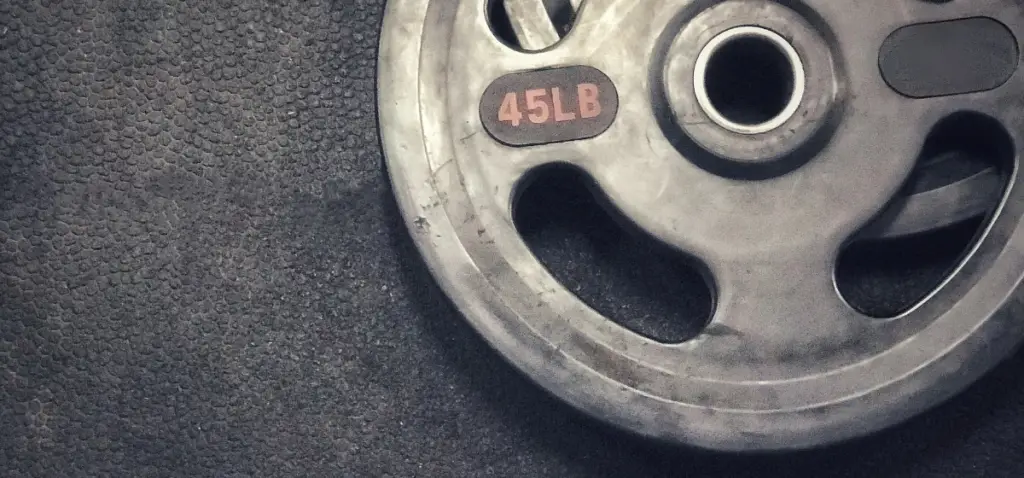We all have grown accustomed to using barbells for our favorite exercises. Our shoulders, elbows, and wrists absorb the brunt of the tension and strain caused by this constant gripping. However, getting a strong, solid lift is tough when we’re in pain. Swiss bar is an effective solution? Wondering What is Swiss Bar? We have the answer. Let’s get straight into it.

What Does My Experience Say?
Even if your goal is to increase muscle, you can maximize your gains while doing so. The Swiss bar was the first specialty bar I ever bought for my at-home workout setup.

I’ve used it extensively since I bought it, and it’s been a great addition to my barware collection. This reduces the amount of stress and discomfort you feel, which might improve your performance in your exercises and in your daily life.
Furthermore, you won’t have to compromise on strength and size. You should thoroughly consider its benefits when shopping for home gym equipment.
Your gains are substantial, but so is maintaining your physical health for the rest of your life, so you continue to work at it for a very long time.
What is Swiss Bar?

The Swiss Bar is an intriguing variation of standard barbells. It has many handles that allow you to perform a wider range of push and pull movements with less stress on the shoulders and wrists.
Football barbells, multi-grip barbells, neutral-grip barbells, etc., are different names for Swiss Bar.
It is Efficient:
The efficiency of this gear makes it essential to weightlifters and athletes. Using the Swiss Bar, you can switch the direction your hands are facing by adopting a neutral grip.
Balance:

When using standard barbells, you risk creating unbalances. In contrast, Swiss Bars are made in a way that greatly minimizes the possibility of muscle imbalances occurring during use. Since this is the case, symmetry is maintained.
Advanced and Pain-Free Weight Training Routines
The Swiss Bar can attach additional weight plates to either end, just like a barbell. This opens the door to more advanced, pain-free weight training routines.
Standard Bar vs. Swiss Bar:
One key distinction from using a standard barbell is that your hands will face each other instead of apart. A barbell is a straight iron rod with weight plates that can be added to either end for resistance training. The center of a Swiss Bar is wider than the ends, creating many grip handles.
Protects You from Injuries:

The Swiss Bar’s primary inspiration for the development was the prevalence of shoulder and wrist injuries among bench press athletes.
Stability:
Because your shoulders are involved in so many motions, especially pressing and pulling, this grip and bar style can help you maintain stability in your shoulder joints, reducing the risk of injury and discomfort.
This alternative to a standard barbell can still be racked and used to achieve your strength and size goals differently. Are you now clear on what is Swiss bar? I believe, Yes!
Why use a Swiss Bar?

The design of Swiss bars makes them adaptable for a wide variety of upper- and lower-body workouts. You may perform the bench press with far less strain on your shoulders and wrists when using them.
Athletes in the fields of powerlifting, weightlifting, and football frequently make use of Swiss Bars/Football Barbells. The common barbell consists of a long iron rod with weight plates on either end.
Swiss Bars are a wonderful choice when you need to make significant gains in strength. The grips of a Swiss bar or a football barbell are evenly spaced and help you better hold the weights so you can lift more.
You can use the Swiss bar to perform all the same workouts as a barbell. However, Swiss Bars offer an extremely useful benefit for weightlifters and athletes.
When compared to barbells, Swiss bars are easier on the shoulders. This would greatly benefit those experiencing shoulder pain or recovering from shoulder surgery. The triceps are targeted and developed during a bench press using a Swiss bar or a football barbell.
Watch this video: REP Fitness Cambered Swiss Bar Unboxing & Impressions!
How much does a Swiss Bar weigh?
Swiss bars can range in weight from 39 to 60 lbs depending on their construction. Some people may find it annoying because they have no idea how much weight they are actually benching pressing unless they weigh the barbell before they start.

The Rogue MG-24 is the same weight as a regular barbell (45lbs). Nonetheless, depending on the user’s strength, you can adjust the difficulty level by adding weight plates to each side.
How to use a Swiss Bar?
A Swiss bar can be used similarly as an alternative to traditional barbells. You can do everything from bench presses to overhead presses to curls with a good Swiss Bar. A Swiss Bar has more than one carrying option.
Because the triceps are so heavily targeted during a bench press, the exercise becomes more challenging when the arms are brought closer together.
Essential Benefits of a Swiss Bar
Now that you know what is Swiss bar, let’s have a look at the list of some benefits of a Swiss bar:

- You can use it as a full body workout.
- It helps you in the reduction of shoulder and wrist pain.
- It helps you Increase strength.
- It is perfect for home gyms.
- Swiss Bar helps you better build your physique.
- It is an affordable piece of equipment.
- It is Versatile for Many Exercises.
- It helps you enhance the Range of your motion.
Key points on the Swiss Bar:

A Swiss bar can be used similarly as an alternative to traditional barbells. You can do everything from bench presses to overhead presses to curls with a good Swiss Bar.
Because the triceps are so heavily targeted during a bench press, the exercise becomes more challenging when the arms are brought closer together. A Swiss Bar has more than one handles.
As a result, Swiss Bars are ideal for strength training and muscular development. Safe for use in home gyms, Swiss Bars lessen the strain on your shoulders and wrists when performing bench presses. Swiss bars are versatile and inexpensive, available in various sizes and forms.
Quick exercises with Swiss Bar:

- Curls – Forearms and Biceps
- Incline/Decline Bench presses – Chest and Arm
- Upright Rows – Back
- Skull Crushers – Triceps
- Deadlift – Back and Legs
- Overhead Presses – Shoulders
Final Words: What is Swiss Bar

What is Swiss Bar? This article explains everything you need to know about the swiss bar. Swiss Bars are ideal for strength training and muscular development.
Safe for use in home gyms, Swiss Bars lessen the strain on your shoulders and wrists when performing bench presses. Swiss bars are versatile and inexpensive, available in various sizes and forms.
Because of its various handles, you can use it for a wider range of exercises than you could with a single handle. It makes it a great addition to your home gym’s regular barbell. It is a wonderful piece of equipment that can help you achieve greater results overall.
The Swiss Bar is an excellent addition to any workout routine because of its many useful features, including its ability to protect your shoulders, boost muscle growth, improve your posture, and extend your range of motion.
By allowing for many grip positions, this set of weights opens a world of possibilities for you to achieve your muscle-building and physique-improving goals. For more details, visit Eve Pacific Health. We answer all of your questions and concerns.
